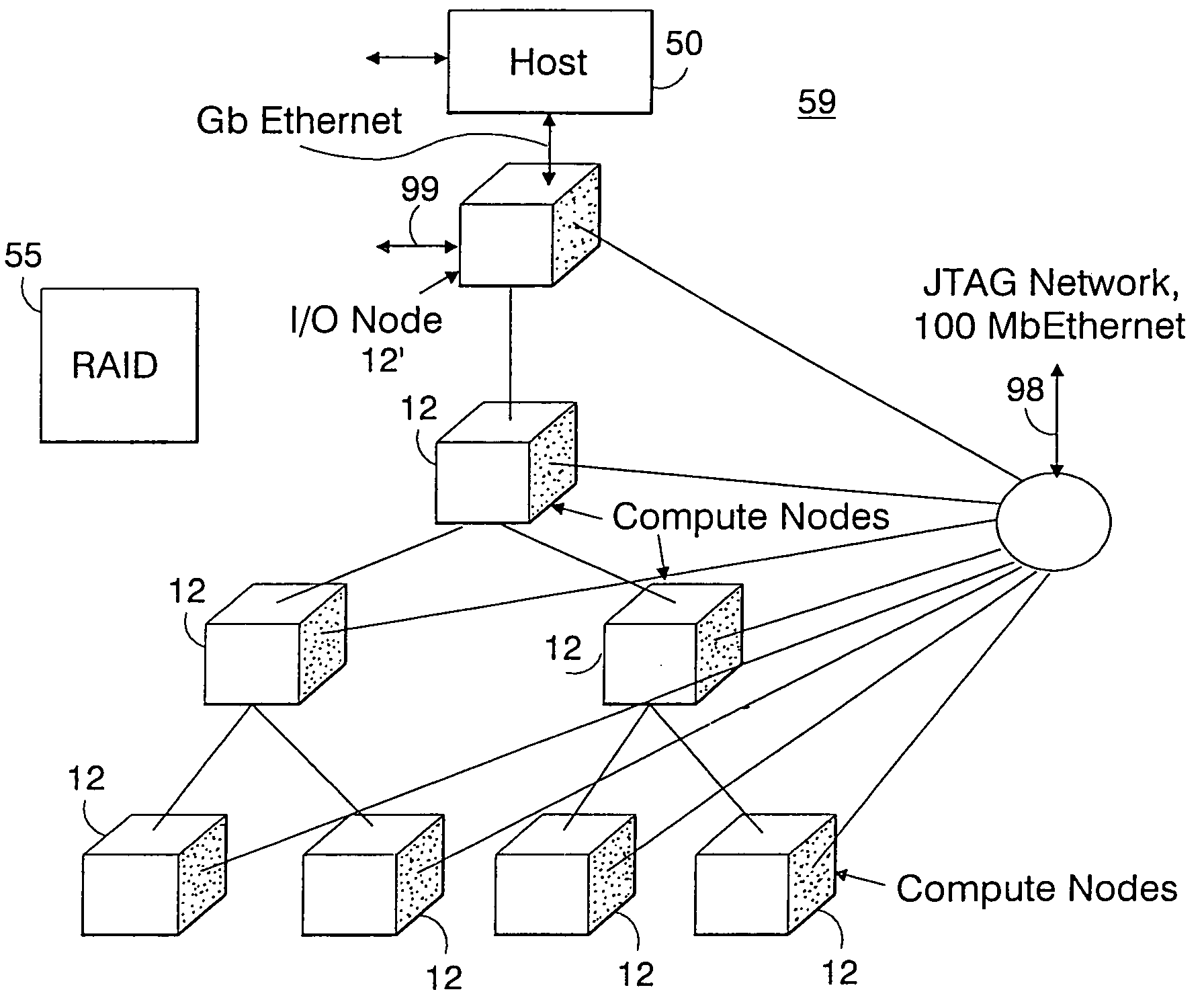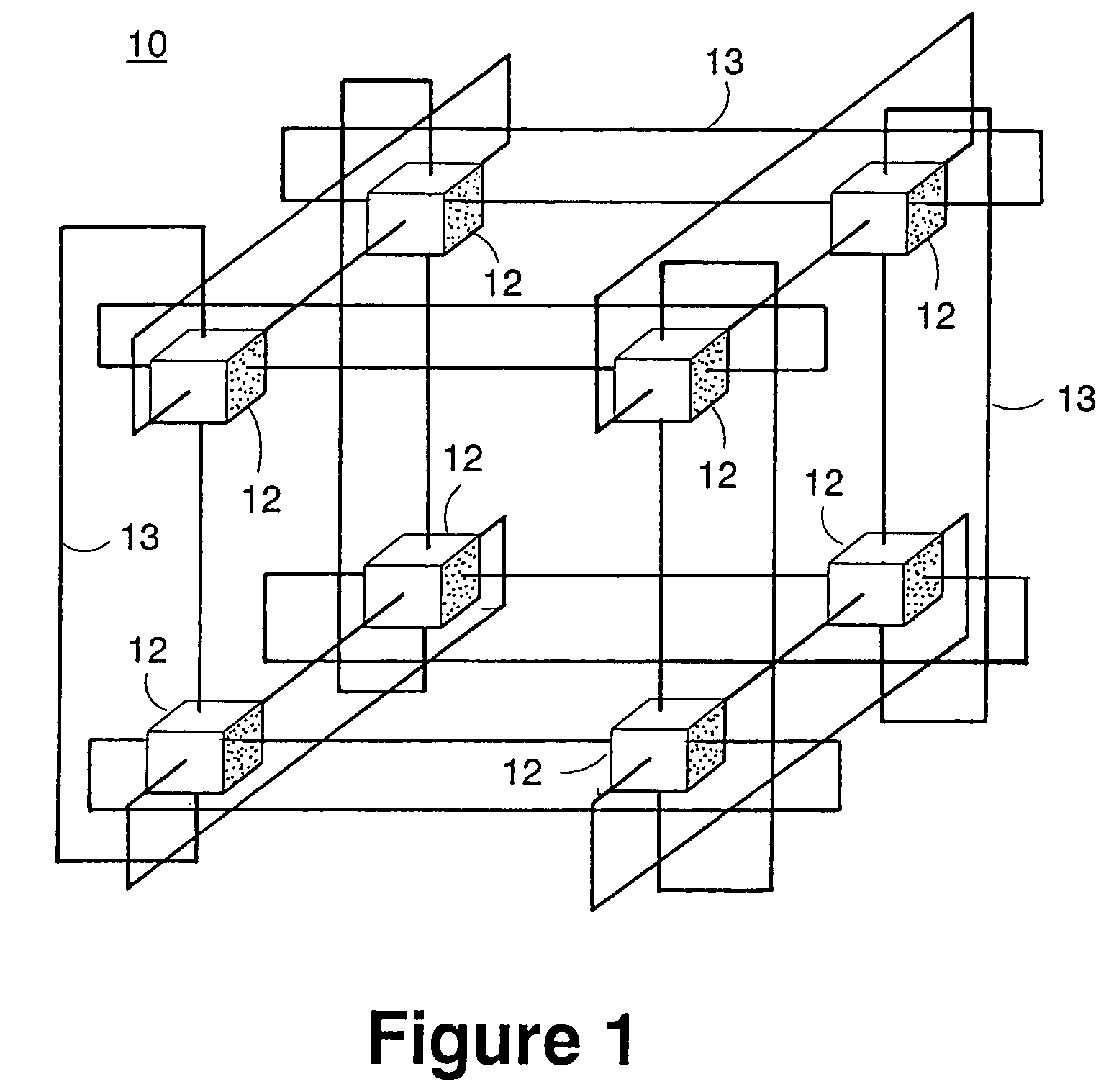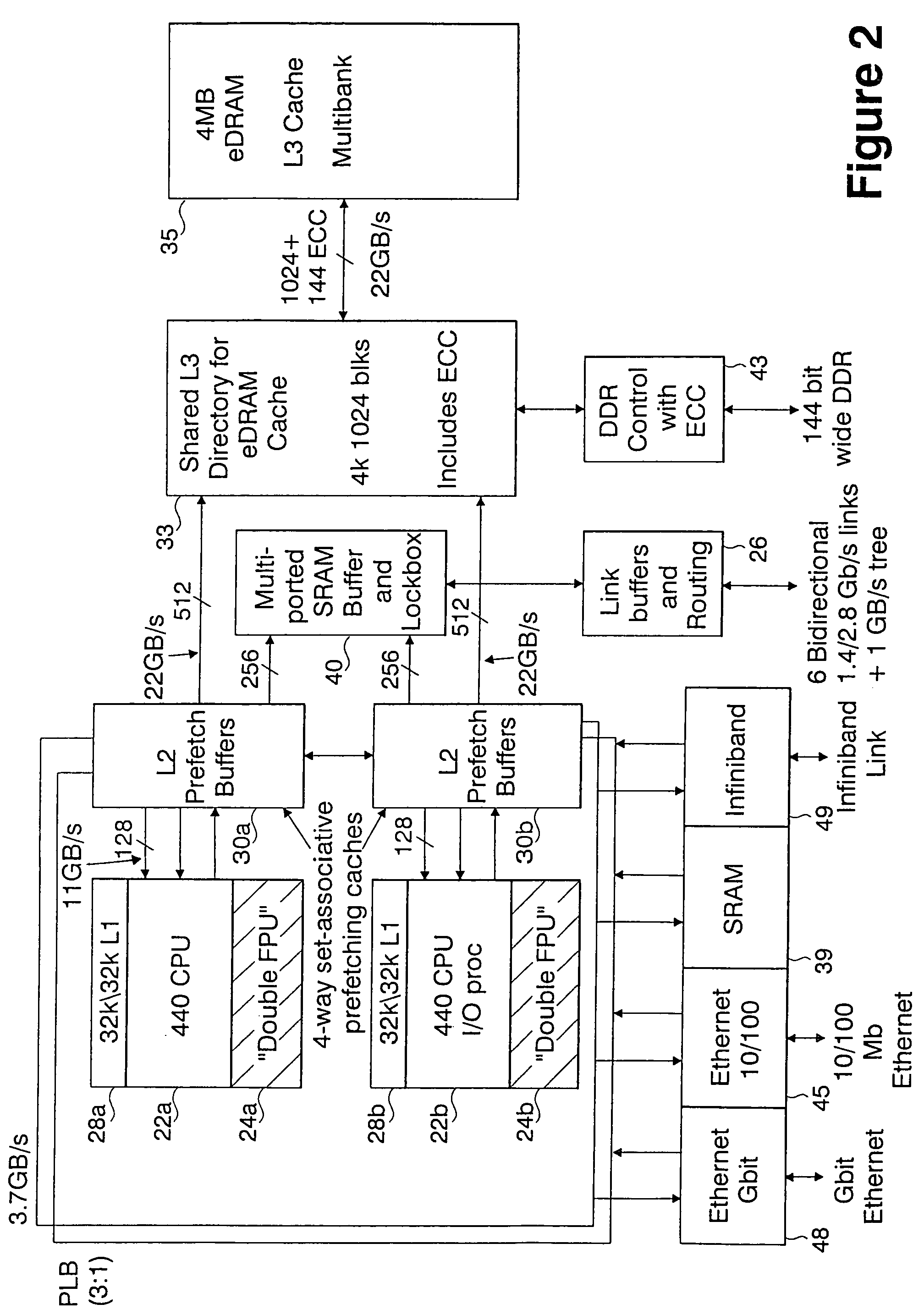Massively parallel supercomputer
a supercomputer and mass-transfer technology, applied in the direction of multi-programming arrangements, memory adressing/allocation/relocation, instruments, etc., can solve the problems of single paradigm of interconnection that cannot achieve performance levels, and achieve unprecedented scalability levels, large scalability, and flexible selection
- Summary
- Abstract
- Description
- Claims
- Application Information
AI Technical Summary
Benefits of technology
Problems solved by technology
Method used
Image
Examples
Embodiment Construction
[0054]The Massively Parallel Supercomputer architecture of the invention is in the form of a three-dimensional torus interconnected and designed to deliver processing power on the order of hundreds of teraOPS (trillion floating-point operations per second) for a wide range of applications. In an exemplary embodiment described herein, the Massively Parallel Supercomputer architecture comprises 64 k processing nodes organized as a 64×32×32 torus with each compute node 12 being connected to six (6) neighboring nodes 12 via 6 bi-directional torus links 13 as depicted in the three-dimensional torus sub-cube portion 10 shown in FIG. 1. It is understood however, that other architectures comprising more processing nodes in different torus configurations is contemplated.
[0055]As will be described in greater detail herein, each node 12 comprises a single ASIC and a plurality of SDRAM-DDR memory chips. The nodes are interconnected through at least six (6) networks, the highest aggregate bandwi...
PUM
 Login to View More
Login to View More Abstract
Description
Claims
Application Information
 Login to View More
Login to View More - R&D
- Intellectual Property
- Life Sciences
- Materials
- Tech Scout
- Unparalleled Data Quality
- Higher Quality Content
- 60% Fewer Hallucinations
Browse by: Latest US Patents, China's latest patents, Technical Efficacy Thesaurus, Application Domain, Technology Topic, Popular Technical Reports.
© 2025 PatSnap. All rights reserved.Legal|Privacy policy|Modern Slavery Act Transparency Statement|Sitemap|About US| Contact US: help@patsnap.com



